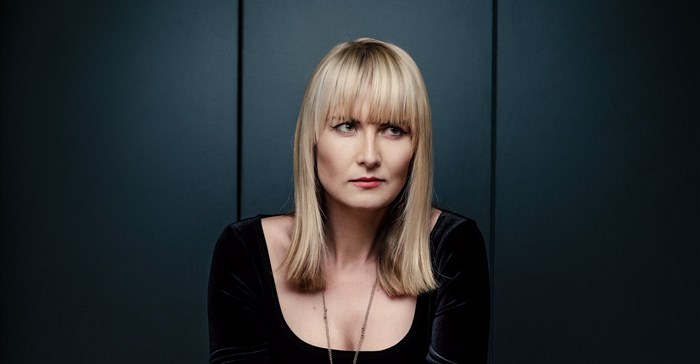In 2016 alone, over $17bn was invested in fintech start-ups. And when all the numbers are in for 2017, this figure is likely to double. Each and every one of these well-funded fintech startups intends to disrupt - and erode - the profitability of established financial industry business models. With all this money flying around, it is tempting to confuse the shiny new technology with the real underlying trends set to disrupt the financial industry. Here are the ones to watch, and why they are important.

Bronwyn Williams
From Bitcoin to the blockchain
Thanks to a phenomenal surge in price in 2017, a single Bitcoin is now worth over R100,000. It is safe to say that virtual currencies have gone mainstream. However, the blockchain, the ledger-based technology behind bitcoin is much more interesting.
If 2017 was the year of Bitcoin, 2018 is set to be the year of blockchain. In particular, we will begin to start using blockchain-enabled smart contracts in our day to day lives. Smart contracts, powered by blockchain ledger technology can verify ownership and enable secure peer-to-peer transactions for everything from rental leases and property transfers to rare art, patents, copyrights and diamonds. No lawyers or bankers required.
Once consumers are comfortable with the idea of transacting with cryptocurrencies, smart contracts are the logical next step.
And what about the established financial industry? According to Accenture’s, nine out of 10 banking executives admit their banks are currently exploring the use of blockchain.
However, the “block” in banks adopting blockchain technology across the formal forex market lies in the fact that until all banks adopt the technology, the chain will not be complete. In other words, banks can only feasibly use the blockchain for domestic and international currency transactions when all other banks do the same.
From roboadvisors to chat banking
Last year this time everyone was talking about the new wave of artificially intelligent financial services planning software known as roboadvisors. These are designed to replace human financial advisors by conducting financial assessments and recommending financial products, are one of the biggest threats to employment in the financial industry.
Now, roboadvisiors are being surpassed by full-service banking bots –powerful chat bots that connect to your bank account and offer real-time banking and financial device, right from your favourite messenger service, such as Facebook messenger, WhatsApp, or WeChat. These banking bots are tantamount to having personal banker in your pocket 24/7.
Chat banking will accelerate the demise of branch banking, and branch banking jobs. Back in 2013, Oxford university predicted 54% of financial industry jobs are at “high risk” of being automated. As roboadvisiors evolve into full-service banking bots, those redundancy estimates are likely to increase.
From banking to #banking
Social media banking is a natural sideways evolution of one-click in-app purchase functionality popularised by online retailers and hospitality services. If you can spend money with the click of a button, buy apparel through your WeChat feed or book a hotel with an Instagram “like”, why shouldn’t you be able to save and invest your money just as easily?
New fintech start-ups have created services that help users to bank and save quickly and easily, directly through their existing social media feeds.
Sumday, for example, allows you to save a small set amount of money towards your saving goals by every time you post the hashtag #sumday in on Instagram. The service not only reduces savings friction, by making saving quick and painless, it also encourages more saving though peer validation and social signalling of spending goals.
From tokenisation to transhumanism
Just as we have got used to near field communication (NFC) tap-and-go card payment technology, tokenisation is about to make spending money easier than ever before.
Tokenisation refers to using the internet of things (IoT) to enable specific objects to make specific purchases without human intervention.
For example, your washing machine could be given permission to purchase washing powder whenever the level drops to a certain point - but nothing else. Essentially, this very simple technology can convert any object into a (very limited) credit card. This technology is already available to manufactures and retailers. Visa’s Visa Ready programme, for example, provides smart product manufacturers with a way to integrate secure payments into connected devices. We will also see tokenised objects integrate with voice-activated IoT personal digital assistants, such as Google Home and Alexa to make the entire purchase experience even more seamless.
But it doesn’t stop there.
The next wave of IoT technology will see the blurring of man and machine as biometric banking is making its way into the mass market.
Cellphone manufacturers have long allowed users to pay for goods using cellphone fingerprint scanners. Eximbank allows ATM transactions and over-the-counter payments by the touch of a finger. In April 2017, MasterCard launched a world-first biometric credit card, with a built-in fingerprint reader in South Africa. And that is just the start. Soon we will get rid of credit cards altogether and replace them with physical bodies.
Soon we will be able to pay using our bodies alone. This could either take the form linking our actual bio-data, such as our retinas or fingerprints to our bank accounts, or through the use of cyborg technology in the form of smart-circuit tattoos or even microchips.
Human microchips might sound like science fiction but they are becoming reality. We have already seen employees in the US and Sweden volunteering to get microchipped by their employers at “chipping” parties.
All these technological trend drivers point to one thing: Middlemen beware
Any financial service provider that puts distance, margin or cost between consumers, their money and what they want to buy with their money should be worried.
Consumers have taken back control of their own finances.

























